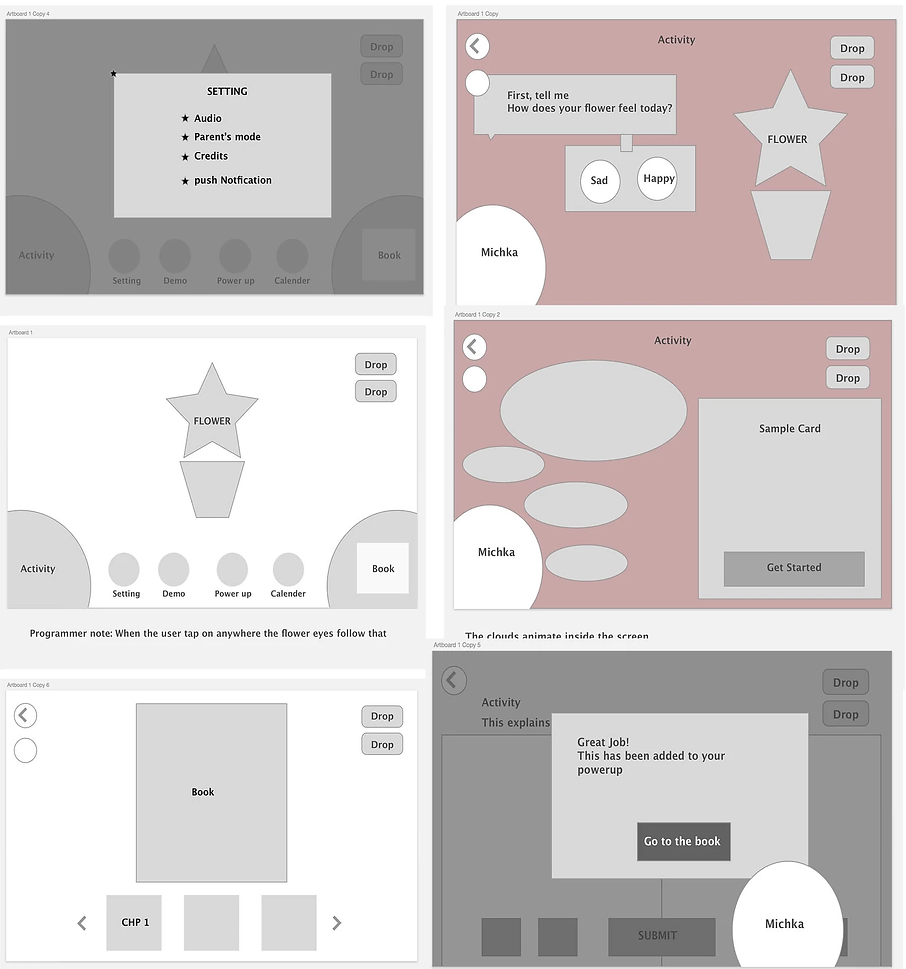
SAHAR SHAMS

MEEKa's SECRET
CATERING
UNDER LIL ONE'S
CONTROL
Designing an application for children 6-11 which addresses the complicated emotions that sexually abused children may experience. The goal is to educate and empower them so
they can open up and ask for help.
70% of abused children are hidden among other children
One out of ten children will experience sexual abuse.
Only 27% of them will tell someone in the first year of the event.
ALL CHILDREN 6-11 ( not just abused children, because 70% of abused children are hidden among other children )

SAHAR SHAMS
SAHAR SHAMS


Using NLP to engage children with a character who shows their internal emotions, Like virtual pets
Pros:
-
A new method that brings the possibility of partnering with shelters that use the storytelling method
-
High possibility to keep their audience engaged due to the fact that virtual pets ( a game genre with a very similar engagement method ) always have been successful at attracting young people's attention.
Cons:
-
A costly solution needs resources and research
-
Not being able to measure the efficiency without costly, Time consuming MVP
Low Fidelity Prototype of NLP idea, First Round
Many organizations provide services and hotlines for children who have gone through or/and currently are experiencing an ACE, and there are many apps that work on mindfulness. However, there is no platform that both teaches soft skills and which leads children to open up to a safe and professional adult or hotline service.

SAHAR SHAMS
The big advantage of their product is the high quality and uniqueness of their app and the depth of experience and knowledge that has gone into creating a child-centered approach to a difficult topic.
The B2C market presents a challenge in that, parents often are not as open as schools are, to talking about the possibility that their child might have gone through adverse experiences.

Final Decision on FIRST ROUND (In which I participate as user experience designer)
We had two main factors to make the final decision.
One, How long their prototype keeps children engaged, and two, how much it helps them to open up with writing or painting in response to the application ( due to the fact that psychologists mainly focus on body language and voice tone which we couldn't use for their application )
NLP:
-
We created a few conversations with the character ( less than 30 interactions)
-
We wanted to see if the children will answer the character's questions or if they skip them
-
We use word hashing for their response to look for red flags
Storytelling:
-
We made a 30-page story with black and white and simple illustrations in a prototype.
-
We wanted to see if the children going to do the activities.
-
If they relate to the character ( Weather they go to the end of the game and story to see what happens to her/him )
After reviewing their user's feedback with child psychologists and their director, we decided to focus on storytelling. However, we decided to add games to their application. We wanted to keep children engaged and also there was another important component to using the game: Children had to save Meeka, the main character to help him escape and run for help. We wanted to enforce their feeling of power and the feeling that they are able to help and save someone. Ultimately, we want them to feel that they are strong enough to help themselves.






